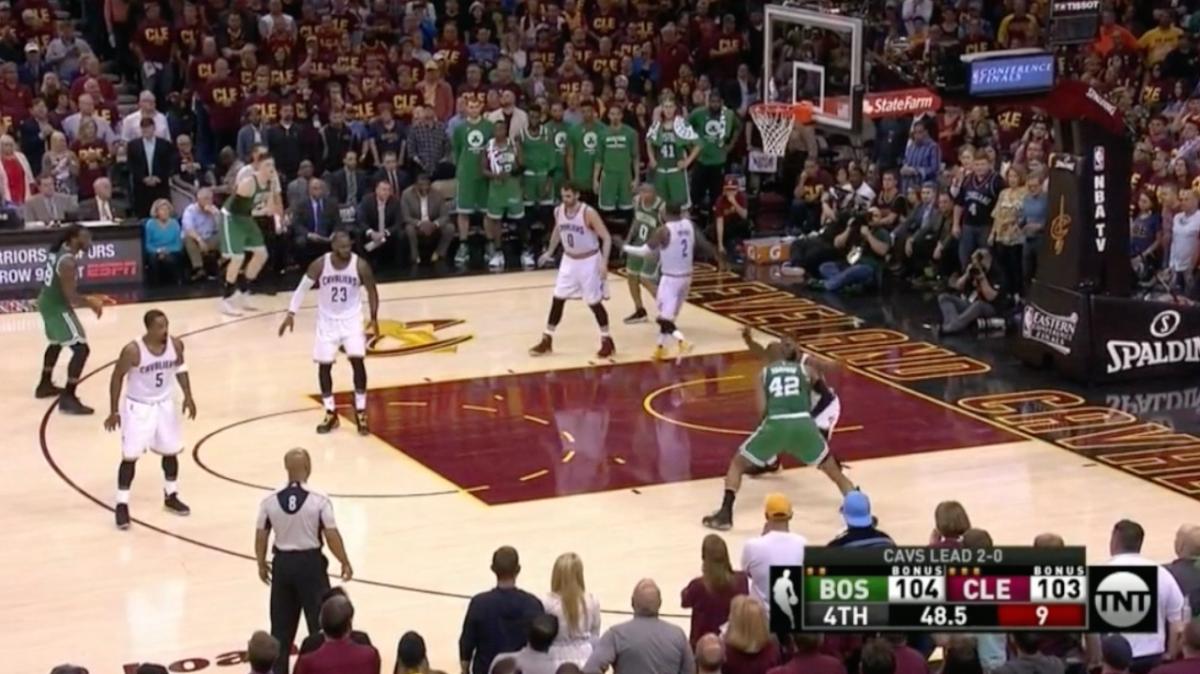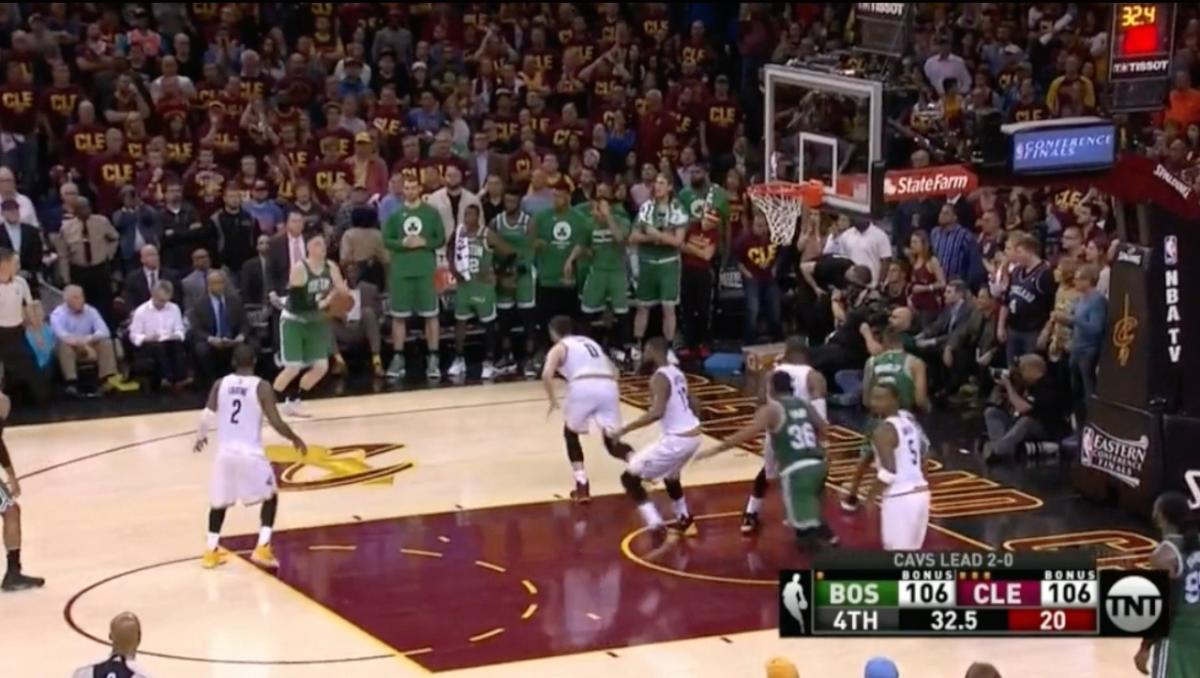Brad Stevens's After-Timeout Genius Keys Celtics' Game 3 Victory

The Cleveland Cavaliers are beatable. We know this because the Boston Celtics proved it so, 111-108, in Game 3 of the Eastern Conference Finals. Isaiah Thomas did not appear. Kyrie Irving and Kevin Love combined for 57 points on just 31 shots. Cleveland enjoyed a 24-shot advantage in total free throw attempts while also making 41% of its 39 three-point tries. Thanks largely to Tristan Thompson, Cleveland even grabbed 28.9% of its own misses. So much of the statistical backbone of Game 3 reads as a game that the Cavs should rightly win, save that they didn’t; not only did the Celtics sew up their defense for their most inspired containment of the series, but a team that has roundly struggled to score without Thomas on the court this season came alive by making do.
The most stunning development of these NBA playoffs came to be through the discipline of Boston’s approach. Even before they took the lead, the Celtics had gone about pursuing the right kinds of shots. A lineup anchored by Marcus Smart displayed uncharacteristic patience. And then, when the time came, Celtics coach Brad Stevens helped to see his team through with sensible, layered sets out of most every timeout. Three distinct plays in the final minute alone helped to carry the weight. When Thomas is in control, positioning him for a downhill drive against a sliding defense can be premise enough to score. When he isn’t, Boston’s best offense comes from structured movement.
Isaiah Thomas’s Historic Season Deserved A Better Ending
Sometimes that’s as simple as engineering space, like Stevens did for Al Horford with just under a minute remaining. First Horford screens off LeBron James to allow for the ball to enter play—hardly a given otherwise considering how easily James can jump a passing lane. He follows through to set a cross-screen at the baseline for Marcus Smart, who was a preposterous 7-of-10 from deep for the game. A physical front from Tristan Thompson prevents Horford from actually reaching his spot, but the set unfolds regardless. After Smart, passes through, Horford is free to step into the mid-post on the right block with no extra defender within reach. Avery Bradley, who had been stationed in the strong-side corner, cuts through just to be sure. It’s all rather simple, but look at the spacing of the final result:

Cleveland’s defense was fully cleared out to the point that any response would require a cross-court rotation. The distance proved enough of a deterrent:
Stevens’ next design developed instantly. As soon as Avery Bradley caught the inbound pass at the top of the key, Smart—the inbounder on the play—ran into play to jam Bradley’s man with a screen. In most cases, a pick-and-roll between two guards would be easily switchable. Yet given the way that Smart streaked into the play, his defender (J.R. Smith) was more focused on trailing his man than providing any kind of help.
With that, Bradley springs free. His downhill drive is at first so uncovered that four different Cavs collapse on the play. Bradley baits them perfectly. Just as he rises up for a potential layup, shooters in both corners are wide open. His angle better allows for a pass out to his left, where Jonas Jerebko makes his catch with this kind of elbow room:

The only misstep is Jerebko’s footing. What could have been a go-ahead three-pointer is instead a go-ahead long two. Persistent defense works as an equalizer. By chasing the Cavs off the three-point line repeatedly on the ensuing possession, the Celtics protect against a heartbreaking shot that would take away their lead. They wind up ceding a Kyrie Irving layup instead—far from preferable, but a shot that under these circumstances cannot beat you.
The Inevitability Of Warriors-Cavaliers III Doesn't Cheapen NBA Season
Just 10.7 seconds remain for one last look in regulation, the game tied at 108. Any turnover could prove fatal. It’s aversion to that kind of risk that incentivizes most coaches to go with a simple isolation in cases like these. Trust in a qualified scorer, try your luck on a pull-up or a step-back, and if nothing else you live to fight in overtime. Stevens set up just that kind of look for Smart to go one-on-one against James … before subverting that default with some clever action on the weak side.
Bradley, Crowder, and Horford sell the maneuver by going completely idle. There they stand, with hands on their hips, as seconds drip off the clock with Smart’s dribble. Then Bradley screens down into the corner for Crowder to make a cut toward the basket. Both defenders involved go with him, so when Bradley then turns to make his own curl to the three-point line around yet another screen, there is no defender left to contest him. Bradley’s shot skims nearly every inch of the rim before dropping through. By the time it does, Cleveland is left with too little time to even attempt a shot. An upset victory was sealed through execution but delivered by deliberate structure.
